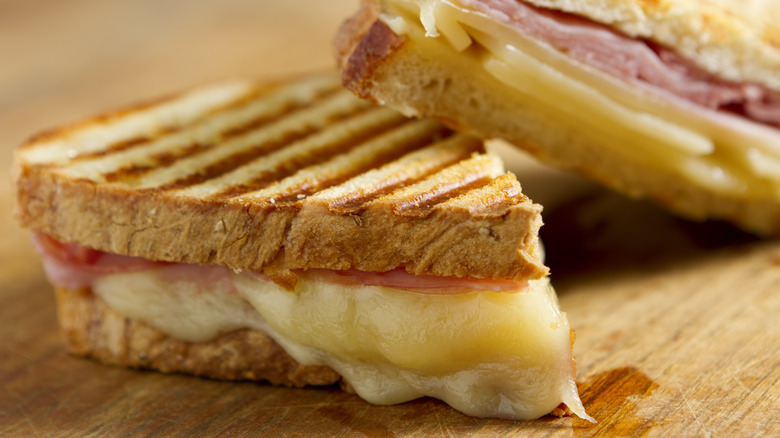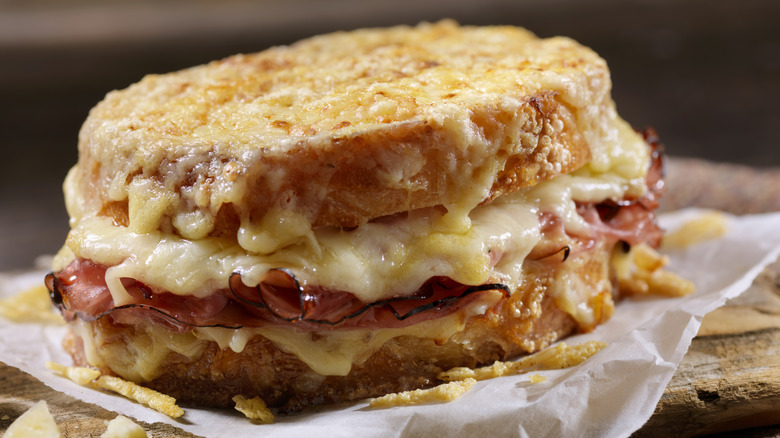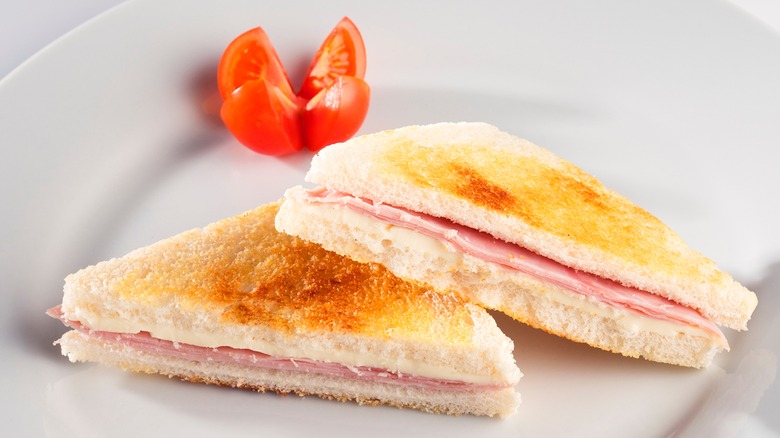Spain's Bikini Sandwich Has Nothing To Do With Swimsuits
If you catch a craving for a sandwich in Spain, you might find a "bikini mixto" on the menu. The dish doesn't contain any sort of seafood, contrary to its beachy-sounding name. Rather, the sandwich filling is simply comprised of ham and cheese. And once it's assembled, it's grilled until the outer crust is crisp and crunchy, and the interior cheese is melted and gooey — a spin on the classic grilled cheese.
Despite what its moniker may lead you to believe, the bikini sandwich has nothing to do with the country's beaches. Instead, it was named for where it was first served. La Sala Bikini in Barcelona opened in 1953, serving as both a concert hall and a mini golf course.
The entertainment venue took inspiration from France's croque monsieur sandwich, which combines ham, cheese, and a tasty béchamel sauce. However, the venue couldn't call the sandwich by its actual name due to the country's language restrictions at the time.
French terms weren't allow in Spain
Francisco Franco was the dictator of Spain from 1936 to 1975. Under his rule, Franco promoted Spanish nationalism. Along with that, he forbade the use of other languages in the country — including French. He declared Spanish to be the only official and accepted language. This meant that French words and terms, including croque monsieur, couldn't be used.
Since La Sala Bikini couldn't credit the French with the invention of the cheesy ham sandwich, it was instead listed on the menu simply as the house sandwich. But as it proved popular with diners, the food became nearly synonymous with the establishment, and it soon became called "the bikini sandwich." Even after the language ban was lifted, the name stuck.
Today, the sandwich remains a popular meal in the country, particularly as a late-night bar snack, or enjoyed alongside tapas. The classic, of course, features just the protein and meat pressed inside grilled bread. But there are ways to amplify the sandwich even more with some added ingredients.
There are different versions of the sandwich
There have been a few variations of the sandwich that have emerged over the years. Some recipes suggest adding a few more ingredients to pay homage to the sandwich's Spanish origins. Spanish chorizo — which differs from Mexican chorizo in terms of appearance, flavor, and preparation methods — or shrimp could add a little extra protein to the sandwich, while cheeses like manchego or ibérico are regional favorites.
The type of bread you use can help add some dimension to the dish, too. While traditional white sandwich bread is typically used, using a sturdier Spanish bread could amplify the flavors even more. Pan Cristal is a crusty bread that originated in Spain's Catalan region and can be sliced for use in the sandwich.
Even international restaurants that serve the dish have put their own spin on things. At Spanish Diner in New York, you can order three different versions of the bikini sandwich: The original ham and cheese, bikini quatro quesos with four cheeses, or a breakfast version with avocado and a perfectly crispy fried egg added in. Los Angeles' BCN adds Portobello mushrooms and truffle aioli to the sandwich. However the sandwich is prepared, it always keeps its warm, toasty, cheesy taste.


